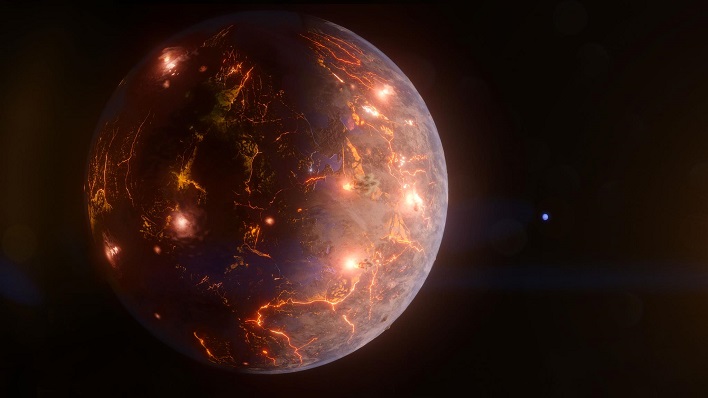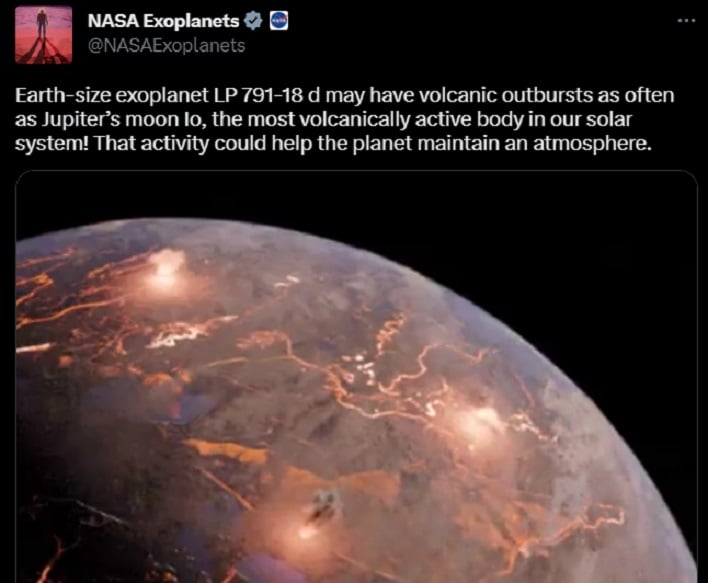NASA Discovers Earth-Sized Planet Blanketed In Volcanoes

LP 791-18 d was detected and studied utilizing NASA's Transiting Exoplanet Survey Satellite, better known as TESS, the retired Spitzer Space Telescope, and several ground-based observatories, according to NASA. The study was led by Merrin Peterson, a graduate of the Trottier Institute for Research on Exoplanets (iREx) located at the University of Montreal. The newly found exoplanet is the third to be discovered orbiting this particular star.
The planet's volcanism is believed to occur due to its significant gravitational interaction with the larger of the two planets, planet c, orbiting the same star. Astronomers believe the gravitational pull from the larger planet causes planet d to have a somewhat elliptical orbit. This elliptical orbit causes planet d to be slightly deformed each time it goes around the star. It is these deformations that are thought to cause enough internal friction to extensively heat the planet's inner core and produce volcanic activity at its surface. This is the same process that Jupiter and some of its moons undergo.

Planet d is slightly larger than Earth, and is located about 86 light-years from our solar system in the direction of the constellation Crater. It orbits a red dwarf star, similar to our own sun, with a relatively low mass and temperature. It completes its elliptical orbit around the red dwarf star in only 2.8 days.
"A big question in astrobiology, the field that broadly studies the origins of life on Earth and beyond, is if tectonic or volcanic activity is necessary for life," remarked co-author Jessie Christiansen. "In addition to potentially providing an atmosphere, these processes could churn up materials that would otherwise sink down and get trapped in the crust, including those we think are important for life, like carbon."
Planet c has already gained approval for observational time on the James Webb Space Telescope, and the team believes planet d is also an exceptional candidate for further observations. The study can be viewed via the journal Nature online.

